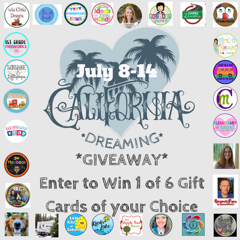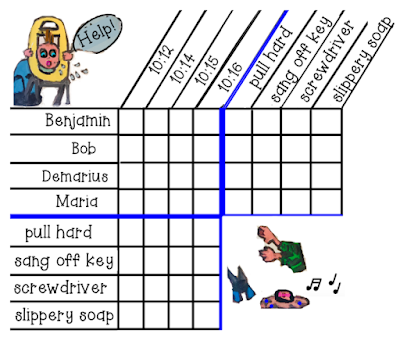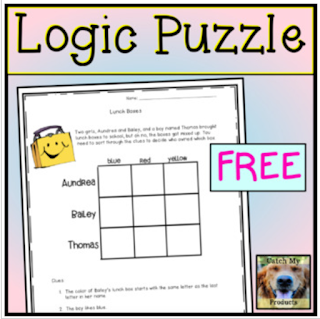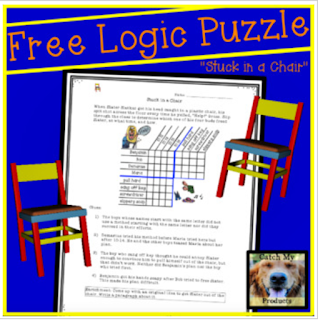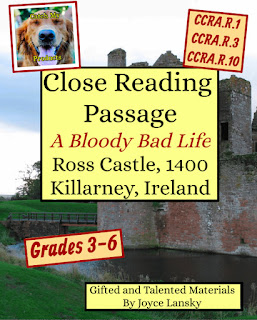After thirty years of teaching gifted and talented students, logic was one of my kids' most popular activities. They really seemed to enjoy the challenge! If you've never done it, it's not tough to get started. Once kids know how to fill out a grid, it's a print and go activity.
No matter how old the child, if they've never solved a logic problem, I start them with a basic puzzle, like above. I'll treat the rows of the grid as ownership. For example, Aundrea owns all of the boxes next to her name; however, ownership is shared with the colors. Blue owns all of the boxes in the column below the word.
Next, I'll point to different boxes and ask, "Who owns this one?" Once the kids understand how the grid works, we move on to the symbols.
I will ask a child, "When you make a mistake on a paper, how does your teacher let you know something is wrong?" I am looking for the idea of an /X/ to show incorrect. Once that is understood, I introduce /O/ to show that something is right.
We will then work a puzzle together.
If your student is an older child, you'll need to challenge him or her with a multi-grid puzzle. These work just as the basic grids, except students are solving three puzzles at once. Also, kids will need to look at the other grids to solve the one they are working on. I call this feeding off of the grid.
Sometimes, I will use side notes to help organize my thoughts, too.
Once your kids get the hang of it, logic puzzles make for great centers, work for early finishers, or just a fun and challenging reward for the students. Logic puzzles involve higher level / critical thinking skills and may be worked independently or in cooperative groups. Also, we all know the boy or girl in class who is brilliant, finishes everything early, and constantly needs something to do. Here you go!
If you'd like to give logic a try, the samples I used are from FREE products that can be downloaded at Catch My Products. Here are the links:
If you decide to use these logic puzzles,
I would greatly appreciate feedback.
Thanks!


